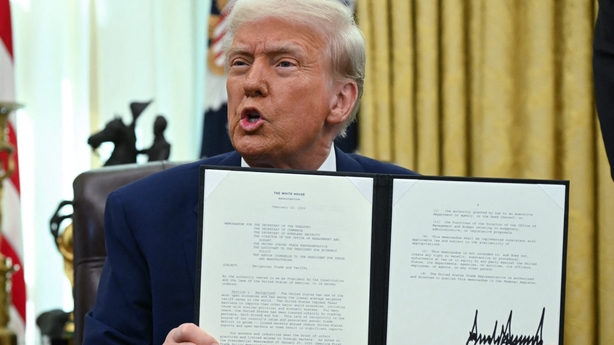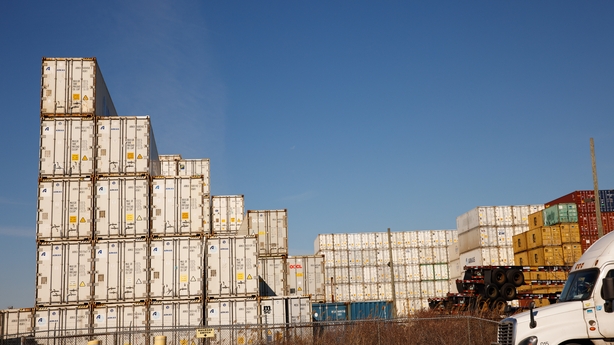From tariffs to counter "unfair trade" to duties over illegal immigration and fentanyl smuggling, US President Donald Trump has unleashed a flurry of levies since taking office, sparking fears of a widening trade war.
US tariffs of 25% on Canadian and Mexican goods have come into effect as a deadline to avert them passed without the neighbouring nations striking a deal.
The measure coincided with the US raising a previously imposed 10% tariff on China to 20% - piling atop existing levies on various Chinese goods.
Here's a rundown of Donald Trump's tariffs, both in force and threatened.
4 February: China tariffs take effect
Washington unveiled a 25% tariff on Canada and Mexico imports on 1 February, with a lower rate on Canadian energy resources.
Chinese goods faced an additional 10% duty.

Trump then agreed to pause the tariffs on Canada and Mexico for a month hours before they were due to take effect on 4 February.
However, the Chinese duties went ahead, prompting Beijing's retaliation.
4 March: Canada, Mexico, China
Trump's month-long pause expired and the 25% tariffs on imports from Canada and Mexico came into effect.
The duties stand to hit more than $918 billion worth of US imports from both countries.
On top of that, Washington increased tariffs on Chinese imports by an additional 10%.
Trump has cited a lack of progress on the flow of drugs such as fentanyl into the United States as justification for the levies.
China has pushed back on its alleged role in the deadly fentanyl supply chain, saying Beijing has cooperated with Washington and arguing that tariffs would not solve the drug problem.
Beijing condemned the "unilateral imposition" of the rising US duties, saying it would impose 10 and 15% levies on a range of agricultural imports from the United States, from chicken to soybeans, effective the following week.

Canada pledged to impose retaliatory 25% tariffs on the United States.
Mexico's president said her country has contingency plans.
12 March: Steel and aluminum
In February, Trump signed orders to impose 25% tariffs on US steel and aluminum imports from 12 March, ramping up a long-promised trade war.
The justification was to protect US steel and aluminum industries, on the grounds that they have been "harmed by unfair trade practices and global excess capacity."
The European Union has vowed to retaliate with firm and proportionate countermeasures.
1 April: Trade policy updates
Trump released a presidential memo titled "America First Trade Policy" on the day of his inauguration calling for government agencies to study various trade issues.
Most of those reports are due by 1 April.
They include an investigation of US trade deficits in goods and whether measures such as a global supplemental tariff would be an appropriate remedy.
2 April: Reciprocal tariffs
Trump has also signed plans for sweeping "reciprocal tariffs" that could hit both allies and adversaries.
He said on social media in February that an 2 April reciprocal tariff date "will remain in full force and effect."
The levies would be tailored to each US trading partner and consider the tariffs they impose on American goods, alongside taxes seen as discriminatory, such as value-added taxes, according to the White House.
2 April: Autos?
Trump has said that tariffs on automobiles, semiconductors, pharmaceuticals and lumber are upcoming, with a rate of around 25%.
He added that an announcement could come as early as 2 April.
Trump also said in February that tariffs on EU products would be 25%, adding that the bloc has "taken advantage of us."

